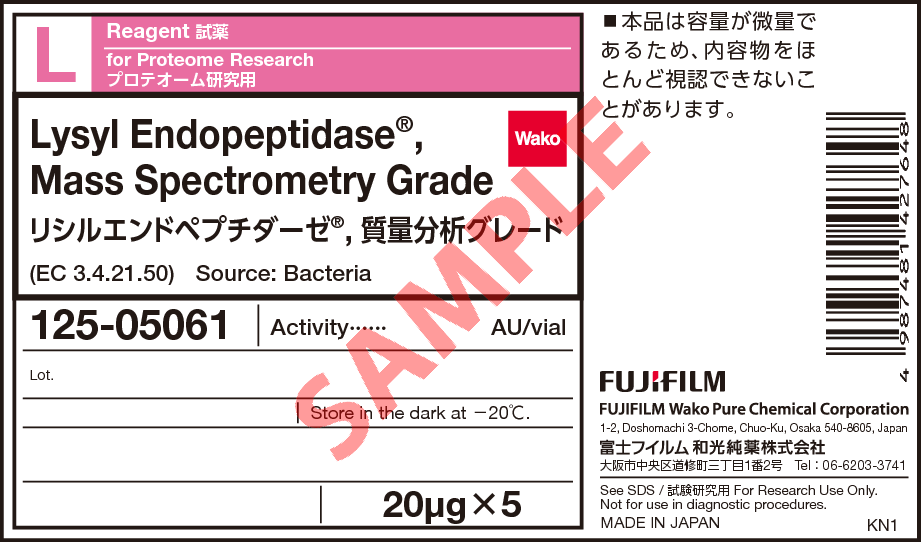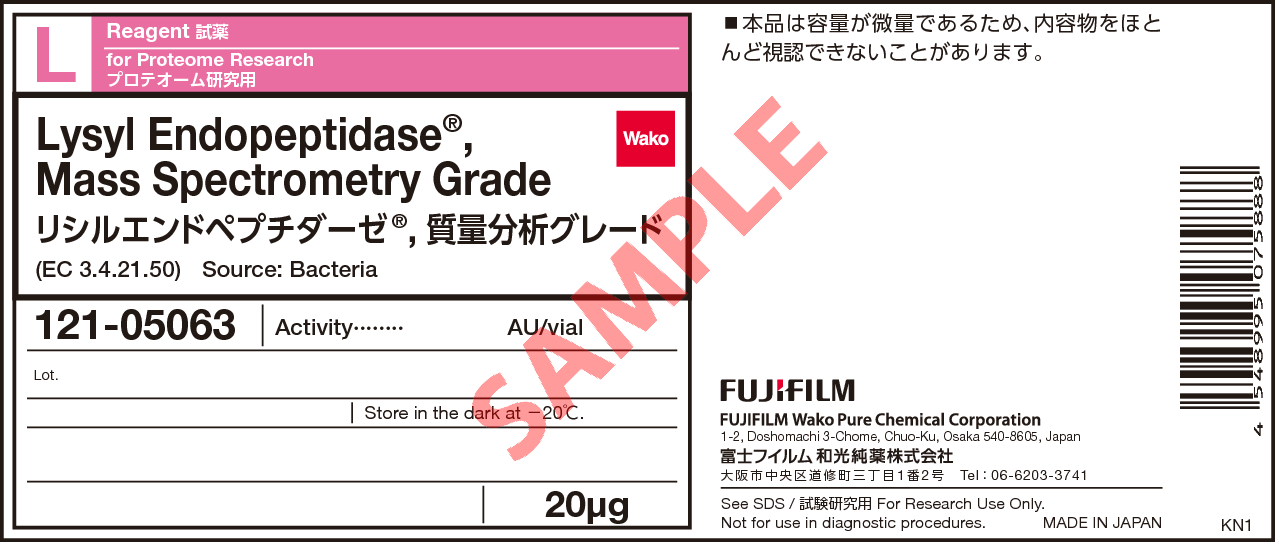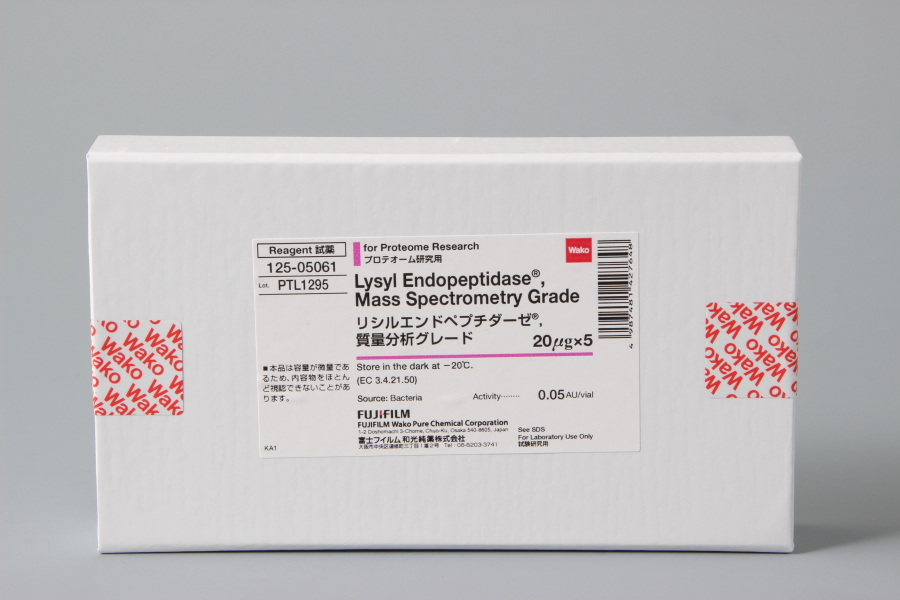Lysyl EndopeptidaseR, Mass Spectrometry Grade (Lys-C)
- for Proteome Research
- Manufacturer :
- FUJIFILM Wako Pure Chemical Corporation
- Storage Condition :
- Keep at -20 degrees C.
- CAS RN® :
- 123175-82-6
- Structural Formula
- Label
- Packing
- SDS
|
Comparison
|
Product Number
|
Package Size
|
Price
|
Availability
|
Certificate of Analysis
|
Purchase |
|---|---|---|---|---|---|---|
|
|
|
20ug x5
|
|
In stock in Japan |
||
|
|
|
20ug
|
|
In stock in Japan |
※Check availability in the US with the distributor.
Document
Application
Comparison of In-gel Digestion using Trypsin (Tp), Lysl Endopeptidase (Lep) and Lep Combined with Tp (Lep + Tp)
BSA band (100 ng) resolved by SDS-PAGE was in-gel digested with Tp, Lep and Lep + Tp and analyzed by MALDI-TOFMAS. The figure shows the individual mass spectra. The evaluation of these peptidases is summarized in the table.
Mass spectrum using Tp and Tp + Lep
When Tp is used concurrently with Lep, additional peaks were found around m/z 2000 compared to when only Tp is used. It shows that the recovery rate of peptide increases.
Table. Comparison ofTp, Lep, and Tp + Lep
| Tp | Lep | Tp + Lep | |
|---|---|---|---|
| Cleavage site | C-terminal of Arg and Lys | C-terminal of Lys | C-terminal of Arg and Lys |
| Missed Cleavage(Rates of missed cleavage)※ | Many (8 %) |
Very few (0 %) |
Few (3 %) |
| Number of identified peptides | 17 | 19 | 22 |
※The coverage (percentage of available peptides in the entire sequence) obtained by database search using a parameter setting of Missed Cleavage = 0 was subtracted from the coverage obtained by using a parameter setting of Missed Cleavage = 1.The value resulted from subtracting the coverage obtained when database searches were performed with Missed cleavage 0 from that obtained when performed with Missed cleavage 1. “Coverage” is the percentage of peptides obtained after in-gel digestion in the whole sequence.
These results indicate there are very few missed cleavages obtained by Lep digestion. When Tp is used concurrently with Lep, missed cleavages decrease and the number of identified peptides increase compared to when only Tp is used.
Data wasprovided by Dr. Y. Wada, Osaka Medical Center and Research Institute for Maternal and Child Health.
References
- Wada, Y. and Kadoya, M.:J. Mass Spectrom., 38, 117(2003).
- Shevchenko, A., Wilm, M., Vorm, O. and Mann, M.:Anal. Chem., 68, 850(1996).
Overview / Applications
| Outline | This product is for research use only. Do not administer it to human. [BIOCHEMISTRY] For Proteome Research! Among the most important techniques in proteome analyses is the in-gel digestion of protein spots/bands that have been resolved by electrophoresis using digestive enzymes, such as trypsin and lysyl endopoptidase. Proteins can be identified by mass spectrometry analysis of the peptides produced by in-gel digestion, and further information regarding post-translational modifications can be obtained.Lysyl Endopeptidase, Mass Spectrometry Grade is a freeze dried product that retained sufficient activity for in-gel digestion and packed in very small quantities for convenience purposes. [Features]
[Related Products]
[Physical properties]
Source: Bacteria
|
|---|
Property
| Appearance | Lyophilisate |
|---|---|
| Origin / Source | Bacteria |
| Activity | 0.03 - 0.07AU/vial |
Manufacturer Information
Alias
- Lys-C
For research use or further manufacturing use only. Not for use in diagnostic procedures.
Product content may differ from the actual image due to minor specification changes etc.
If the revision of product standards and packaging standards has been made, there is a case where the actual product specifications and images are different.






